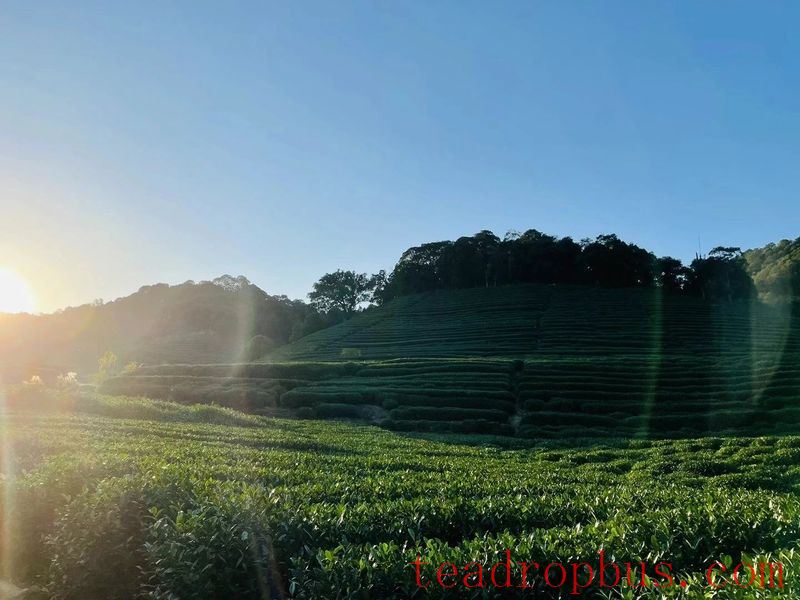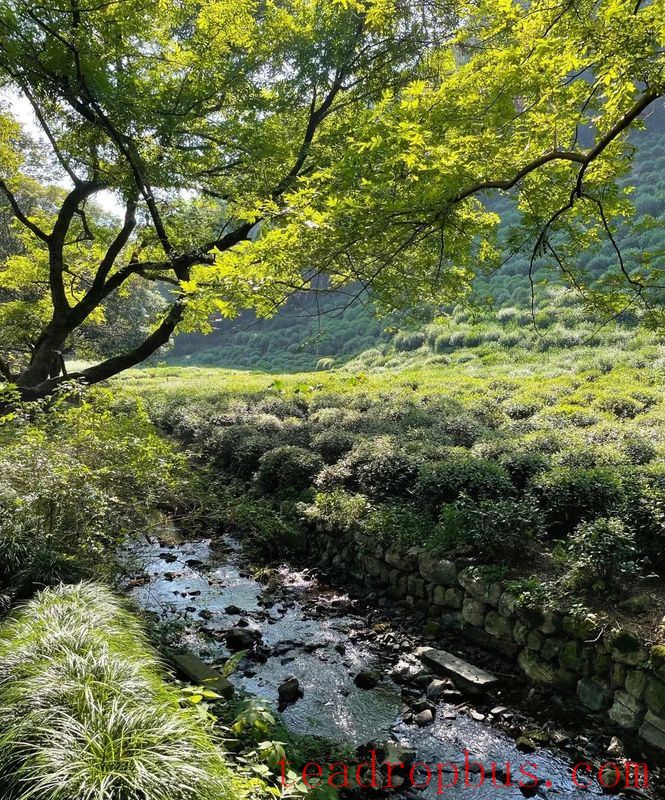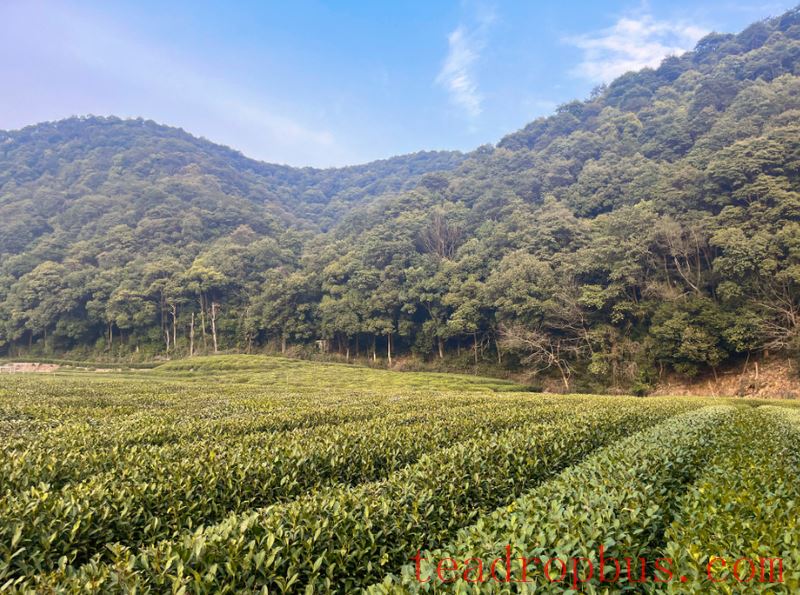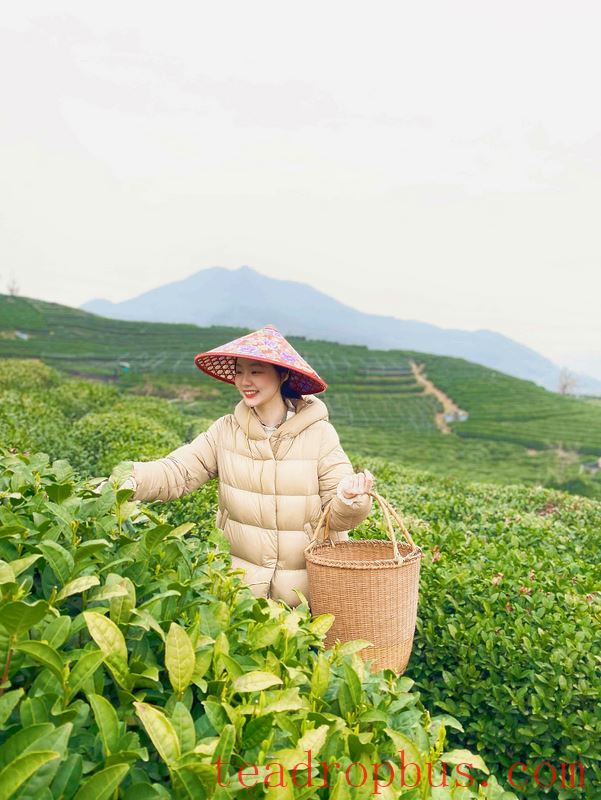Seek ancient charm in Longjing, savor a cup of tea on the hillside. In 2025, the United Nations designated May 21st as International Tea Day. As we celebrate its fifth anniversary, the fragrance of tea has permeated people's lives. Within the city of Hangzhou, the tea mountains, with their lush greenery and fragrant aroma, have become one of the top destinations for young people to hike and enjoy scenic views. Topics like “A Real-Life Spring Mountain,” “I Was Healed by Hiking the Tea Mountain,” and “A Route Worth Taking 99 Times for Fresh Air” are highly popular on social media platforms. On a sunny weekend, meeting up with friends and wandering through the verdant tea fields is truly delightful. Why have the tea mountains of Hangzhou become a great place for young people to hike? And why do these tea landscapes inspire such longing?
The Beauty of the Tea Mountains Lies in Their Deep Roots in Chinese Culture.
Since ancient times, the love for tea mountains has been ingrained in the Chinese psyche, serving as a significant source of inspiration for literary works. Tea trees have been praised as “the fine trees of the south” in classic literature, vividly portraying their beauty. According to Zhao Fangren's annotated collection Tang and Song Tea Poems Annotated, from the Tang and Song dynasties onwards, a large number of poems about tea included descriptions of tea mountains. These poems not only depict the beauty of the tea mountains but also reflect the aesthetic ideals of ancient Chinese scholars who found solace in nature and believed in harmony between man and nature. As Zhong Yulong wrote in Talking About Hangzhou: Talking About Mountains, the tea mountains of Longwu are “the ancestors of the mountains around West Lake and Xixi,” full of spirit. Du Mu, in his poem Inscription on the Tea Mountain, wrote, “Through the willow village, graceful and slender, across the pine ravine, noisy and tumultuous,” intertwining the leisurely pursuits of scholars with the experience of walking through tea mountains, imbuing the landscape with cultural significance. In the tea mountains, one can slow down and feel the tranquility of nature, reflecting on the sentiments of past travelers and poets.

As places that have produced tea for generations, the rolling tea mountains are also rich in historical relics. The history of tea in China is long, and hiking trails in tea mountains often follow routes used to transport tea after harvesting. These old or new mountain paths were once important trade routes for tea, witnessing the spread and exchange of Tea culture. Generations of tea farmers have worked diligently on the tea mountains, passing down their craftsmanship and tea culture, imbuing these hiking trails with a rich tea cultural atmosphere. The hidden chimes and inscriptions in the mountains add an element of surprise to every exploration.

Similar to the humanistic aura of West Lake, the tea mountains of Hangzhou have always been sacred places cherished by scholars. To this day, the tea mountains of Longjing Village still tell the story of how Emperor Qianlong personally planted eighteen imperial tea trees during his six visits to southern China, which have since become the Eighteen Imperial Tea Gardens, witnessing the changing visitors over time. The development of Hangzhou's tea mountains is closely tied to Buddhist and Taoist cultures. Ancient temples like Tianzhu and Lingyin had clear records of tea production, and both religions emphasized the importance of tea tasting for meditation and cultivation. Exploring the tea mountains not only reveals natural beauty but also allows one to witness the history and cultural heritage along the way, feeling the weight of history and the allure of culture while hiking.
The Beauty of the Tea Mountains Lies in the Tranquil Tea Culture.
When climbing high in the tea mountains, one naturally desires a good cup of tea. Zhang Kejiu wrote in Man and Moon Reunited – Mountain Affairs, “What happens in the mountains? Pine flowers are brewed into wine, spring water is used to brew tea.” As the saying goes, “Good mountains produce good tea,” and the quality of tea is greatly influenced by the mountain. From the perspective of tea quality, old and ancient tea trees on tea mountains mean high-quality tea. A popular mountain among tourists is likely to be a place where good tea is produced. For example, the five core production areas of West Lake Longjing tea – Shifeng Mountain, Longjing, Yunqi, Hupao, and Meijiawu – are all prime spots for tea mountain hikes. The undulating mountains not only create beautiful natural scenery but also nurture the fresh and sweet Longjing tea. Tea is a fusion of man and nature. Drinking tea in Hangzhou's tea mountains seeks a realm of “harmony between heaven and man.” “Water is the mother of tea,” and using the clear spring water from the tea mountains to brew tea is the best. For instance, the water from Hupao Spring is refreshing and sweet, considered the most suitable for brewing Longjing tea. In today's era of popular tea drinking, enjoying a pot of tea brewed with good water in a beautiful mountain setting is extremely appealing to hikers on the tea mountains.

Luyu's Classic of Tea records, “Shennong tasted hundreds of herbs, encountering seventy-one poisons in a single day, and was cured by tea.” It seems that tea first encountered humans as a cure for poison. In today's fast-paced life, young people can find healing in tea tasting. Recently, young people's interest in traditional culture has grown increasingly strong, and tea culture, as a shining component of it, has gained recognition and attachment from young people in new ways.
The essence of Chinese tea culture lies in humility, respect, and refined elegance. From the exquisite tea utensils of the Six Gentlemen of Tea Ceremony, the meticulous brewing process, to the ingeniously arranged tea rooms and gardens, ancient Chinese people were particularly particular about tea drinking. Although the sense of ritual in tea drinking may have diminished with the times, its cultural core remains unchanged. People can still hold a tea cup in their hands, focusing on the aroma, taste, and essence of the tea, finding peace and experiencing the power of tranquility and elegance. The unique charm of tea culture in advocating self-cultivation plays a healing and comforting role, much like the remedy in Shennong's mouth thousands of years ago, in today's world of high pressure and fast pace.
The Beauty of the Tea Mountains Lies in Their Innovative Industrial Development.
Today, the continuous development of the tea industry and tourism has attracted a steady stream of visitors to teahouses and restaurants along the tea mountains. Along the way up the tea mountains, one will pass by some very distinctive establishments. There are teahouses with a new Chinese style that appeals to young people's aesthetics, elegantly decorated private tea courts, and farmhouses with appetizing dishes. Unlike shops in urban business districts, these farmhouses and teahouses exude a peaceful rural atmosphere and a broad, open ambiance amidst the green hills and waters. Farmhouse restaurants along the road feature dishes that revolve around tea, such as chicken cooked with Longjing Green Tea, soups made with tea leaves, or ice cream flavored with tea, offering a unique taste. In the teahouses, various innovative tea drinks stand out, whether they align with traditional seasonal themes, including cold-brewed summer drinks and tea cooked around a stove in winter, or cater to young people's preferences for tea drinking. Stopping for a rest in the tea mountains, savoring delicious food and tea, and forgetting worldly affairs, the tea fields and mountains naturally become favorite spots for young people to take photos in a new Chinese style, very photogenic.

In recent years, thanks to government attention and planning, various cultural and tourism activities and markets are frequently held on tea mountains. “From afar, one hears of a gathering at the tea mountain, with jewels and jade, songs and